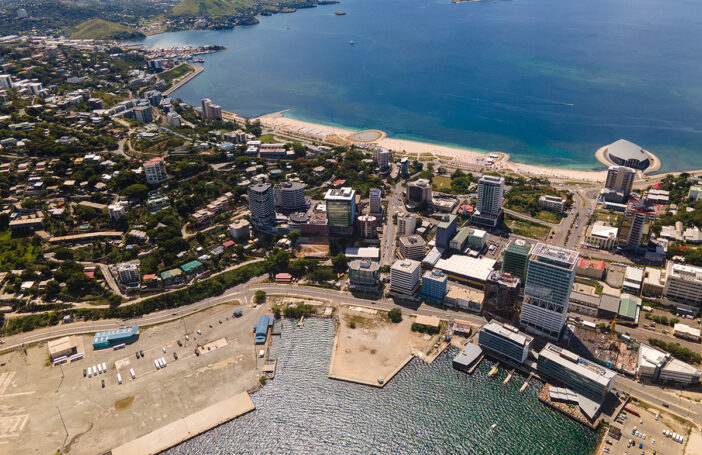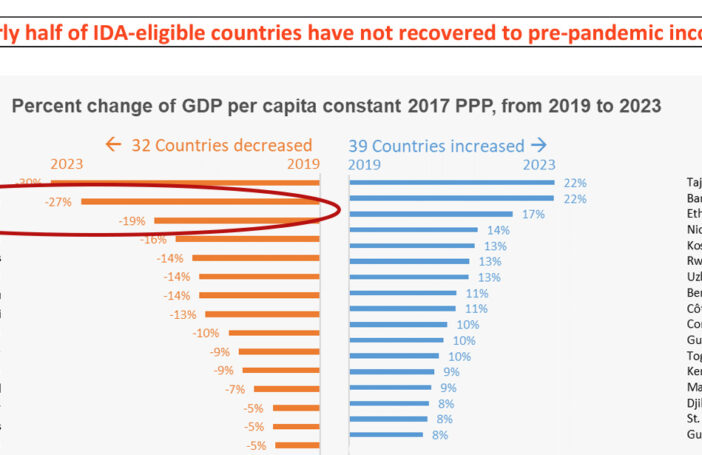The just-released July edition of the Asian Development Bank’s Pacific Economic Monitor projects economic growth of 6.0% in the Pacific region for 2012. Regional growth continues to be driven primarily by developments in the large resource-exporting economies of Papua New Guinea (PNG), Solomon Islands, and Timor-Leste, which together account for two-thirds of regional output. Growth is now expected to decline to 4.2% in 2013, mainly due to lower growth in these same resource-exporting countries. Despite easing of international commodity prices, growth in these economies remains unchanged in 2012 since near-term growth prospects are dependent on ongoing infrastructure projects.
Growth in the rest of the Pacific islands (i.e., excluding the resource exporters), has generally proceeded more slowly in 2012 and is expected to average only about 2.0% in 2012 and 2013. In Fiji, floods early in the year adversely affected key agricultural exports, and added to the lull in investment and private sector growth the country has experienced since 2006. GDP growth of only 1.3% in 2012 is now forecast for the country. Growth trends in the other smaller Pacific island economies tend to be most strongly influenced by the ebbs and flows of public expenditures on development partner-financed projects. Growth in the Cook Islands and Samoa for FY2012 (ended 30 June 2012) has fallen short of expectations as capital expenditures were below budgeted levels. Continuing declines in seafarers’ remittances in Tuvalu and slower-than-expected implementation of infrastructure projects in Vanuatu have also resulted in downgrades of 2012 growth projections. In contrast, Fiji is expected to grow stronger-than-projected, despite successive floods, due to growth in the mining sector and increased development partner-funded projects. Economic growth in Palau now appears to be higher than projected due to robust tourism performance early in the year.
Non-commodity exporters remain heavily dependent on the economic prospects of Australia and New Zealand.
Among the 14 countries in the Pacific that are members of ADB, most tend to have close economic links to Australia and New Zealand, particularly trade, investment, and tourism links. Economic trends in Australia and New Zealand are therefore key determinants of Pacific growth. The value of Pacific exports to Australia was 6.1% lower during the first five months of 2012 compared to the same period in 2011. PNG’s main exports to Australia — gold, mineral fuels, petroleum, and petroleum products — dropped by 10.0%, and PNG accounted for 90.8% of total Pacific exports to Australia in the first quarter of 2012. In contrast, the value of Pacific exports to New Zealand in the first quarter of 2012 rose by 22.2% compared with the same period in 2011, due to rising import volumes of phosphate from Nauru and coffee from PNG.
Commodity exporters look increasingly exposed a possible slowdown in global growth.
The eurozone crisis has so far had only a limited impact on the Pacific region, but lengthening and/or worsening of the crisis can be expected to affect all Pacific economies — both the large resource exporters and the smaller Pacific islands. Growth of 7.6% for the second quarter of 2012 reported by the People’s Republic China (PRC) –the lowest quarterly growth in the country since the first quarter of 2009 — and the earlier downgrading of its 2012 growth target to 7.5%, presage lower Pacific growth in 2013. Lower demand for commodities can be expected to reduce export earnings of the resource exporters (e.g., PNG, Solomon Islands, and Timor-Leste). Diminished growth prospects globally, and in the PRC in particular, would adversely affect the Australian economy, which, in turn, would depress demand for the limited exports of small island economies and Australian tourism to the islands. Lower PRC growth is expected to have greater implications on global demand and international prices of key global commodities. While slower growth in Australia can be expected to influence nearly all the Pacific economies, the impact of lower commodity prices is expected to affect mainly the resource exporting economies.
Significant challenges on the fiscal front underline the need for structural reforms.
Ironically, the large resource exporting economies are likely to face the most severe challenges in adjusting their fiscal positions in response to further softening in global growth. This is because the declines in export earnings would be most severe and investment inflows — which have been driving strong economic performance in recent years — would likely tighten. Expected declines in PNG government revenue over the medium term will present the incoming government with a particularly challenging fiscal situation, while Timor-Leste appears to have sufficient savings to weather declines in global demand. The smaller Pacific economies likely face less daunting challenges in adjusting to further global softening because existing investment inflows are more limited. Surveying the region, poor business environments hamper private sector growth and make these economies unattractive destinations for overseas investment. However, the returns from investments in resource extraction activity are sufficient to make them worthwhile, despite the poor business environments in the large resource rich Pacific economies.
With strong support from development partners, Pacific island governments have registered some successes in their efforts to improve their business environments and make their countries more attractive destinations for overseas investment. Some of these achievements are highlighted in the latest Pacific Economic Monitor. One of the featured policy briefs outlines the recent state-owned enterprise (SOE) reform efforts in Kiribati, discussing the recent privatization of the Kiribati Supply Company Limited as a case study of the challenges faced and benefits to be garnered from SOE reform efforts. A second article examines recent accomplishments in improving access to finance through secured transactions reform. This benefits small businesses by making it easier to purchase capital vital to expanding business operations by allowing movable assets to be pledged as collateral. A third article discusses the empowerment of women in private sector activities, highlighting the important role women can play in spurring private sector growth if barriers against their full and equal participation in entrepreneurial activity are overcome.
Christopher Edmonds is a Senior Economist at ADB in Manila.




